Shopify Image Banner Size Recommendations for Newbies 2025
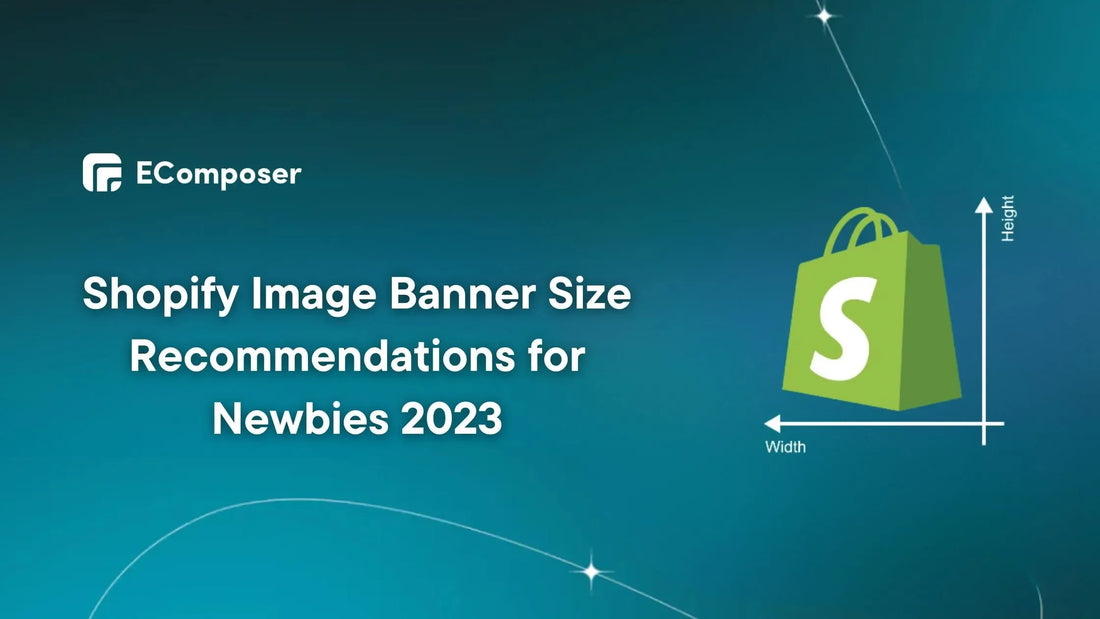
Table Of Contents
The correct Shopify banner size may enhance user experience, website loading speed, and more. According to Harvard Business Review, pictures drive internet buying. You're new and don't know what is the best size for a Shopify website banner image? Don't worry—we'll supply a tailored Shopify banner size and tool for creating exciting online experiences on this post.
Why Do Shopify Banner Sizes Matter for Customer Experience?

The LinkedIn page states, "Banner ads were one of the first forms of digital advertising."
Data shows Google found that 50% of internet buyers used photos to choose products.
Your Shopify shop is like a shiny storefront in the e-commerce world, eager to attract clients. Indeed, your banners are the digital equivalent of a well-dressed mannequin or an enticing window display; they play a crucial function in attracting, directing, and keeping customers.
Now, you may be thinking, "Why should I worry about the size of my banners? Don't all sizes fit the same way?"
Websites need image size for page loading speed, design uniformity, analytics, and insights. Choosing the wrong picture size can affect all 3 of these measures, often simultaneously.
Increase Page Load Speed
It's a fact of life in the Internet Age that users will quickly abandon slow-loading websites. Google claims that 53% of visitors will leave if a webpage load beyond 3 seconds.

With an increasing number of people shopping on your Shopify store via smartphones and tablets, optimizing banner sizes is critical for a quick and seamless experience. The bigger the picture on a mobile device, the longer it takes to load. Selecting the correct banner size for your Shopify site will help speed up page loading.
Research by Adobe suggests that lowering picture file size to 1MB speeds page loading by 38%.
So, optimizing banner widths for page loading speed improves user experience and shop performance. Fast-loading pages and large banners encourage shoppers to linger, explore, and buy, helping your Shopify business succeed.
Consistency in Design
ResearchGate showed that 78% of people think website homogeneity improves online buying.

Imagine entering a well-organized, attractive shop. Everything is organized, and the visual clues lead you to your desired portions. You can easily browse the goods. This great experience comes from intelligent design and consistency; your Shopify shop is no exception.
According to Nielsen Norman Group, inconsistent online picture design lowers user confidence.
You read right—Shopify banner size consistency may boost your store's credibility and professionalism. Uniformity in banner size and style offers visual harmony across your business. Your site looks clean and professional when all your banners are the same size. Through banner design consistency, you develop a visual identity that connects with consumers and makes browsing on your Shopify store enjoyable.
Statistics and Insights
E-commerce is constantly changing, and data is the key to success. Your Shopify store's banner size is a data-driven approach that may significantly affect performance.
Another ResearchGate research found that statistically optimizing banner size and location boosted advertising banner income by 22%.

Banner size optimization boosts conversion rates, according to statistics. It's not just about looks; it's about converting people into paying clients. Research reveals that websites with appropriately sized ads have higher conversion rates, making them more profitable.
Image Types For Your Shopify
Shopify is a digital canvas where you can tell your brand's narrative and attract consumers. When designing a captivating and visually engaging shopping experience, using a wide range of picture kinds is essential.
Here are the critical picture kinds that may improve your store's attractiveness and connect with your target audience:
- Product Images: Your e-commerce business relies on product photos as salespeople. Quality, comprehensive, and well-composed product photos help shoppers assess your products and make purchases.
- Lifestyle Images: Lifestyle photos contextualize your items. These photos show clients how things fit into their lives. Lifestyle imagery, such as a model wearing your attire or a nicely arranged table with your tableware, ties your items to your clients' dreams.
- User-Generated Content (UGC): Get consumers to post photos utilizing your stuff. Your brand gains trust, authenticity, and community via UGC.
- Brand Images contain your logo, banners, and other brand-related visuals. Your shop should use consistent brand pictures to develop a visual identity.
- Trust-Building Elements: Certifications, trust badges, and secure checkout pictures build client trust. They reassure customers that your shop is trustworthy and safe, increasing purchases.
- Seasonal and Promotional Images: Use seasonal and promotional pictures to liven up your shop. These pictures build urgency and excitement for holidays, discounts, and special events, motivating buyers to investigate your products.
By carefully employing these pictures, you may create a visually attractive and engaging buying experience for your target audience. Each image tells your brand's narrative and connects consumers to your goods and goal.
Recommended Shopify Image Size for Different Store Sections
Product Page Banner Size
Product photos sell e-commerce products silently. Customers see your products' worth, quality, and attractiveness via them. And the recommended excellent size for product images on Shopify is 2048 x 2048 pixels.
For further tips on creating a high-converting product page, check out the blog post "How to Create a High-Converting Shopify Product Page."

(image source: allbirds.com)
The image above exemplifies the brand Allbirds, a well-known American footwear company.
Also, keep product photographs under 300 KB. With several of these photographs, your business might slow down rapidly.
Furthermore, the suggested primary product picture size is at least 600 × 600 pixels or greater to guarantee high display quality on all platforms. Moreover, by-product photos should be 500 × 500 pixels or greater.
However, LinkedIn Research found that clear product photos boost conversions by 30%. As a result, significant firms often use high picture sizes to illustrate product features and attract buyers.
Shopify Banner Size
As its name indicates, a banner picture is a backdrop to your homepage. Your Shopify homepage is your online store's red carpet and valuable real estate for making an excellent first impression.
Remember that 1920 x 1080 px (16:9 aspect ratio) is the most common screen resolution when creating photos covering the screen. Timbuk2, an American backpack and handbag business, uses these sizes for Shopify banners.

(image source: timbuk2.com)
You may pick between small, medium, and big banner heights on the Dawn theme to determine how much above-the-fold space it takes up.
Collection Page Banners Size: Organizing Your Store
You may think of the collection pages in your Shopify shop as organized displays for distinct product types. Banners on collection pages serve as interactive digital wayfinding signs to direct clients around your business.
The optimal resolution for a Collection page is 1600 pixels wide by 600 high. Below are Dagne Dover's collection page photos in this size.

(image source: dagnedover.com)
Remember, too, that banners on collection pages are often shorter than those on the homepage, creating a more panoramic effect.
Blog and Content Image size
Images enhance blog posts by providing richness, context, and engagement. The pictures provide a glimpse into your story, increasing the viewers' interest level.
The suggested Shopify blog picture size is 1200 x 800 pixels. It balances picture quality and loading speed to give readers a good experience.
However, your desired size depends on your Shopify theme and screen space. The ideal picture size depends on your website theme and design choices. The standard size is 1200 by 800 pixels, but you may alter it to fit your blog's style and readership.
Example: Italian high-end shoemaker Koio utilizes the suggested blog picture size of 1200 x 630 px for their product photos.

(image source: koio.co)
Finally, the aim is to balance picture quality with speed and user experience, ensuring your blog photos improve your content without creating substantial loading delays.
Shopify Slideshow Image Size
The slideshow or carousel on your Shopify store's homepage is the first thing your customers see, and it sets the tone for their whole buying experience. Your slideshow photos must be visually beautiful and proportioned to create a lasting impact.
The recommended size range of 1200-2000 pixels in width and 400-600 pixels in height ensures your slideshow images span the entire width of your webpage, making them visually impactful and captivating. These proportions allow for vivid and detailed images.
Akamai research suggests that conversion rates drop 7% for every 100 ms load time increase. Therefore, picture slide size must be reasonable to load rapidly.
Thus, a good slide picture size improves user experience and conversion.
Logo Header Image Size
The logo is your brand's face. Your consumers link it with your goods and services. With your Shopify store's significant logo, brand recognition, and professionalism are crucial.
Even a little logo should be clear and attractive. Whether in your website header or on a mobile device, 250x250 pixels keep your brand intact and recognizable. Although 1 MB is suggested, smaller files without losing quality are preferable. Smaller files speed up page loading, improving user experience.
The 4:1 ratio of Shopify's logo implies that your logo should match your store's theme and appearance. This guarantees your logo matches your website's features.
Recommended Shopify Banner Image Formats

You need the appropriate image format for Shopify banners to look well, load fast, and operate on several devices. For banners on Shopify, we advise the following image file types:
JPEG (Joint Photographic Experts Group)
A famous picture format, JPEG stands for Joint Photographic Experts Group and handles photographic and high-detail images. From simple digital photos to intricate graphics, this format can accommodate everything. Important JPEG features include:
- Widespread Support: Most browsers and devices support JPEG. 100% of common browsers support JPEG.
- High-Quality Shopify Image Compress: Web designers suggest 80% JPEG for banner pictures to reduce file size. JPEG is a lossy picture compression technology, therefore, it may minimize file size while protecting visual quality. As a result, page loads are sped up.
- Great for Photography: Shopify recommends JPEG for banner photos since it is lightweight, loads fast, and has a good enough resolution for display.
For Shopify banners utilizing JPEG, picture quality and file size must be balanced. This style suits photographic or detailed visual content and versatile e-commerce banner demands. For visual integrity, save high-resolution JPEG photographs, mainly when exhibiting items.
PNG (Portable Network Graphics)
Portable Network Graphics (PNG) is a popular picture format that works well for certain visual elements. Over 82% of common browsers support PNG, according to W3Techs.
When you need transparency or clear photos, it's ideal. An overview of PNG:
- Lossless Compression: PNG's lossless compression method stores high-quality pictures. This is useful for banners with little wording or details.
- Transparency Support: PNG files can have transparent backgrounds because they support the feature. When put together with the background, this helps make a beautiful sign that flows well.
- Small File Sizes: According to design experts, high-quality banners should use 8-bit PNG with appropriate compression.
- Crisp Graphics: Shopify recommends PNG for transparent or high-quality banners like brand logos.
Use PNG's transparency capability and ability to produce crisp, clear-edged Shopify banners. For logos, icons, and flags with text or sharp lines, it's ideal. Watch file sizes to guarantee smooth page loading, particularly for more enormous banners.
WebP
Contemporary and efficient, WebP is a web picture format. It's great for picture quality, and powerful compression makes it suitable for Shopify banners that need quality and quick loading times. Here is a quick rundown of WebP:
- Outstanding Compression: Google claims that WebP compresses 30% better than JPEG.
- High-Quality Images: WebP can offer high-quality pictures with a wide color range and few artifacts, making it a good choice for photographic banners.
However, you should know WebP has limited Support for Older Browsers. WebP is supported by 83% of browsers, less than JPEG or PNG.
Thus, consider browser compatibility and provide a fallback format for older or less popular browsers.
GIF (Graphics Interchange Format)
Banners needing interaction or communicating via motion should use the Graphics Interchange Format (GIF), a flexible picture format that supports basic animations. Learn about GIFs:
- Animation Support: GIF lets you make captivating animated banner pictures. Unbounce reports 3x greater engagement with GIF banners.
- Small File Sizes: Compared to MP4 movies, the file size of a GIF is less when preserving simple animations. As a result, GIF is still widely used.
- Transparency: Shopify suggests employing GIFs to improve the attractiveness of banners displaying new items, promotions, etc.
However, you should be aware of a few drawbacks to utilizing GIF format for banner photos on Shopify:
- Images in GIF format are usually bigger. GIF files can weigh up to 10 times the equivalent JPEG. This delays webpage loading.
- PNG has transparency controls, however, GIF does not. This makes it unsuitable for banners with intricate backgrounds.
- Playing GIF animations on outdated phones or bad connections may lag.
Still, GIFs work great for banners that need basic motions, such as showing product details or rotating special deals. However, because of their restricted color palette, GIFs may not be the most excellent solution for banners with highly detailed or photographic information.
Shopify Mobile Size Image Recommendations

Mobile optimization is crucial for Shopify stores in today's digital world. This optimization requires adequately sized and optimized photos. Here are Shopify's mobile website image size suggestions for product, background, banner, and logo images:
- Use JPEG or WebP for photos, PNG for graphics and logos, and GIF for short animations.
- Test your company across several mobile devices and browsers to verify pictures and functionality.
- Try 2048 x 2048-pixel square photos. Square photos maintain visual consistency on high-resolution mobile displays.
- Shopify suggests having a second banner picture with a size of 640x200 px to fit phone displays.
Want to Optimize Your Shopify Banner?

Suggest Tool Optimization Images
If you want faster page loads, a better user experience, and better search engine rankings, you need to optimize the photos on your Shopify shop. Some recommended software and websites for picture editing are as follows:
- Adobe Photoshop.
- Canva.
- TinyIMG.
- Optimizilla.
- Kraken.io.
- Shopify Apps.
- Google PageSpeed Insights.
However, the technologies above have several drawbacks, such as being complicated and time-consuming for non-designers.
Furthermore, several picture optimization software include lossy compression options for reducing file sizes. However, this may reduce picture quality, making it unsuitable for high-fidelity photographs like product shots.
Easy Editing With EComposer Landing Page Builder
Tired of conventional web page editing's complications?
Check out EComposer Landing Page Builder to transform your Shopify store's editing. EComposer is the solution you've been looking for to simplify the development of your theme's header, footer, 404 page, upcoming page, product page, collection page, blog page, and cart page.
Use EComposer to explore the following utilities:
- Effortless Drag-and-Drop Editing: With its live drag-and-drop editor, EComposer makes editing easy. Stop struggling with complicated code and templates. EComposer lets you easily construct and customize any page or part.
- One Tool, Endless Possibilities: Say goodbye to the need for various third-party applications to increase your store's functionality. EComposer provides pre-built e-commerce extensions.
- Speed and Performance: Worried about the impact on your store's rate? EComposer's acceleration tools and optimized scripts keep your site operating smoothly. Stop slow-loading websites and start giving consumers a better, more responsive purchasing experience.
Choose EComposer for your Shopify shop and discover its simplicity and power. Make stunning landing pages, optimize product pages, and build your ideal shop without the hassle of web editing.
Start using EComposer now to expand your options!
FAQs about Shopify Banner Size
How Do I Crop A Banner Image In Shopify?
Shopify banner cropping is simple. Here's how:
- First, Shopify Admin login: Use your Shopify credentials to access the admin panel.
- Then, select "Online Store." from the left menu.
- Next, go to "Online Store" > "Themes." Themes installed on your shop will appear.
- Choose the one to alter and click "Customise" next to it. Find the banner picture to crop in the section editor.
- Usually, you'll find choices to change or replace the picture. Select "Edit" or "Change image".
- Finish by clicking "Publish" or "Save" in the theme editor to publish the cropped banner picture on your website.
Note that Shopify theme and feature differences may affect the stages. Some themes enable extensive picture editing, while others offer simple cropping. If your article doesn't include cropping capability, use image editing software or third-party tools to crop the picture before submitting it to Shopify.
Are PNG or JPEG Better For Shopify?
PNG and JPEG are both suitable image formats for Shopify.
JPEG is recommended for product photos, pages, and blog entries, and PNG for decorative images like logos, trims, and borders (these should be in CSS, not HTML, so page load speeds shouldn't be affected).
However, Shopify allows low-quality.gif pictures.
Can Shopify Accept PNG?
Yes, you can certainly upload PNG photos to Shopify. Here are some important considerations when utilizing PNG pictures on Shopify:
- Shopify supports all main image formats: PNG, JPEG, GIF, BMP, and TIFF.
- Logos, icons, and translucent visuals work well with PNG. Lossless compression and transparency are preserved in PNG.
- However, PNGs are bigger than JPEGs. Photos and huge pictures benefit from JPEG's tiny file size.
- On upload, Shopify optimizes PNG files to reduce size and retain quality.
- There is no need to convert PNGs to JPEGs before uploading to Shopify. The platform optimizes both formats.
In conclusion, Shopify supports PNG for transparent graphics. Export with file size optimization. PNGs will be appropriately displayed across devices by Shopify.
Conclusion
The success of your Shopify shop is determined by various factors, including banner size, which is typically overlooked yet critical in the competitive e-commerce industry. As previously said, banner size may affect how well users interact with your business online and your bottom line.
Whether introducing a new collection, advertising a special deal, or improving your store's visual appeal, the correct banner size and EComposer's convenience and power will help you succeed in e-commerce. Smart e-commerce businesses may use the ideal Shopify banner size to explore, build, and grow their brand.









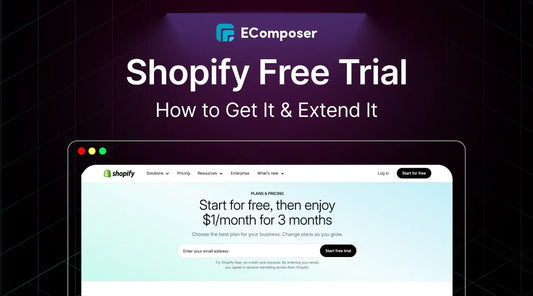
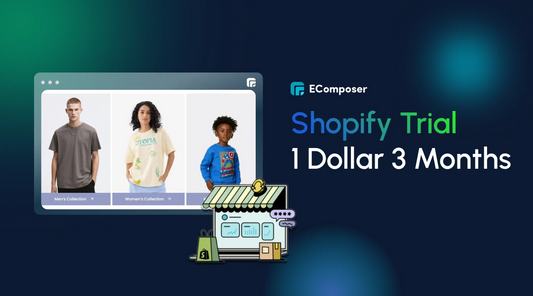
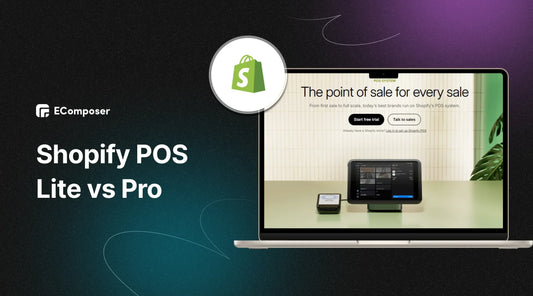
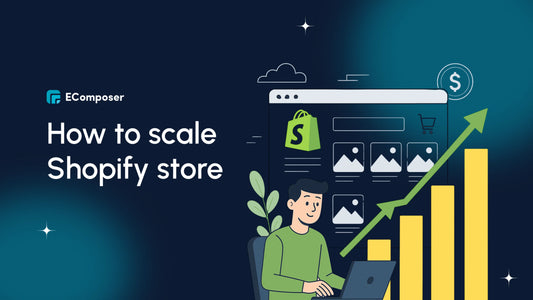
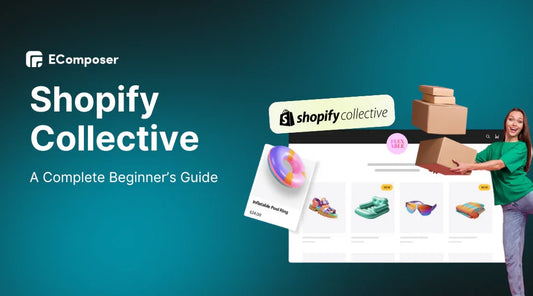
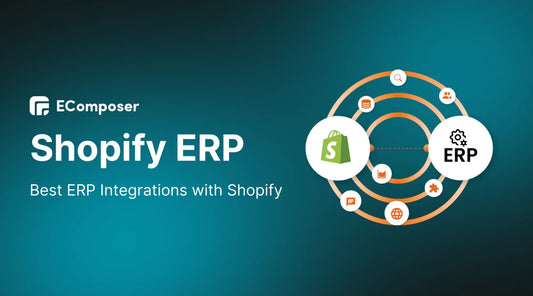







0 comments